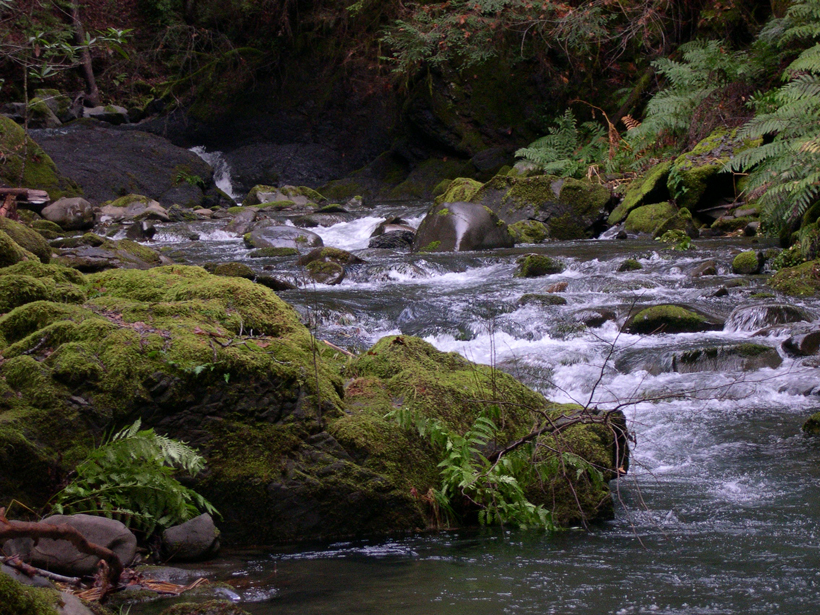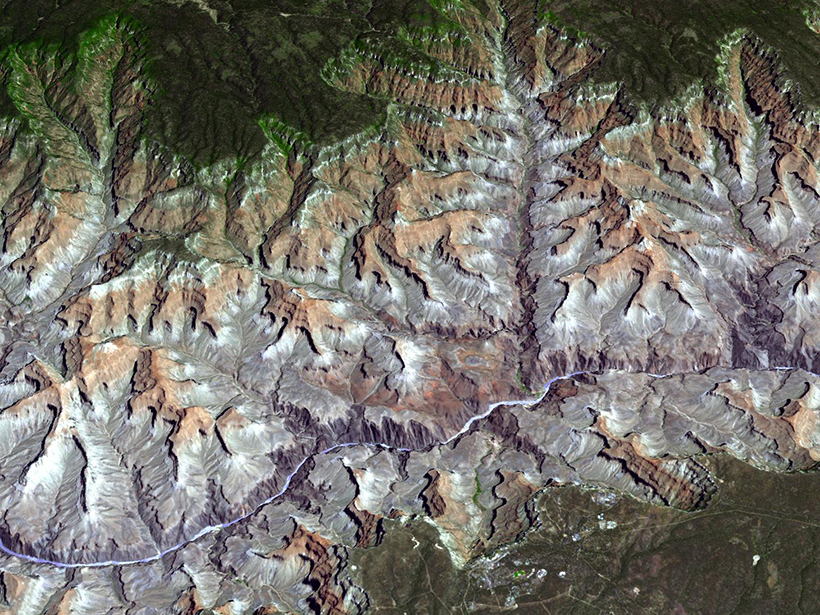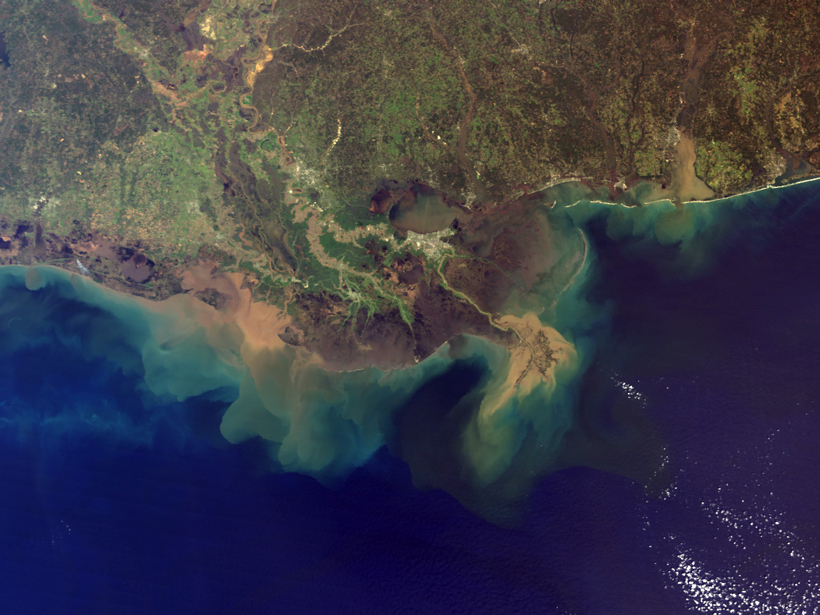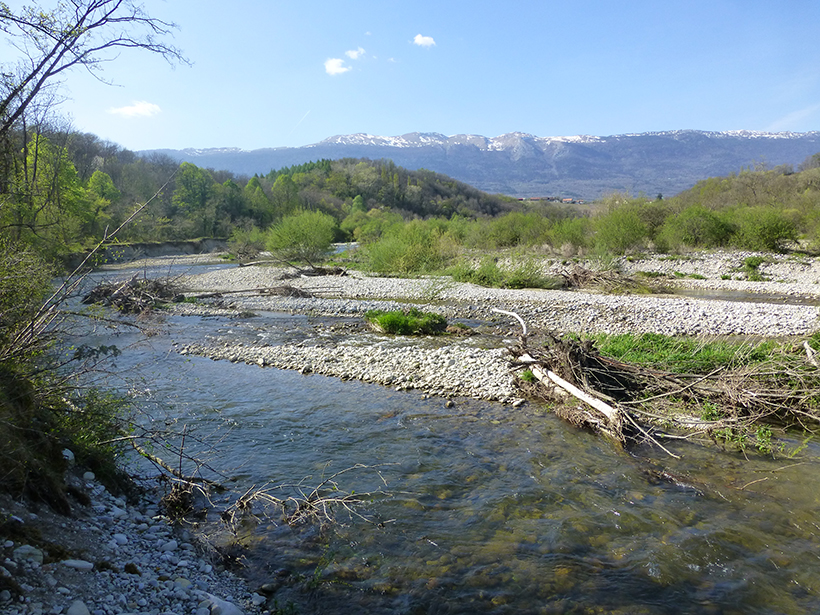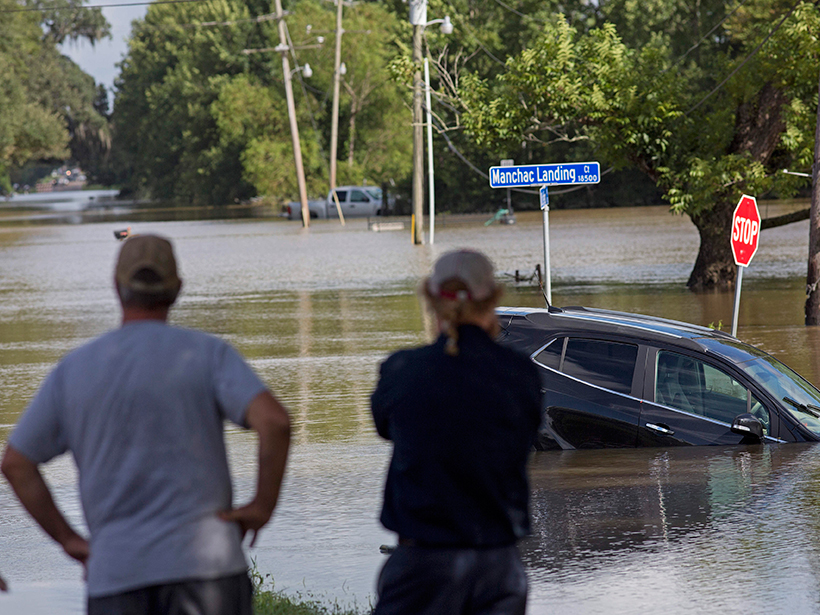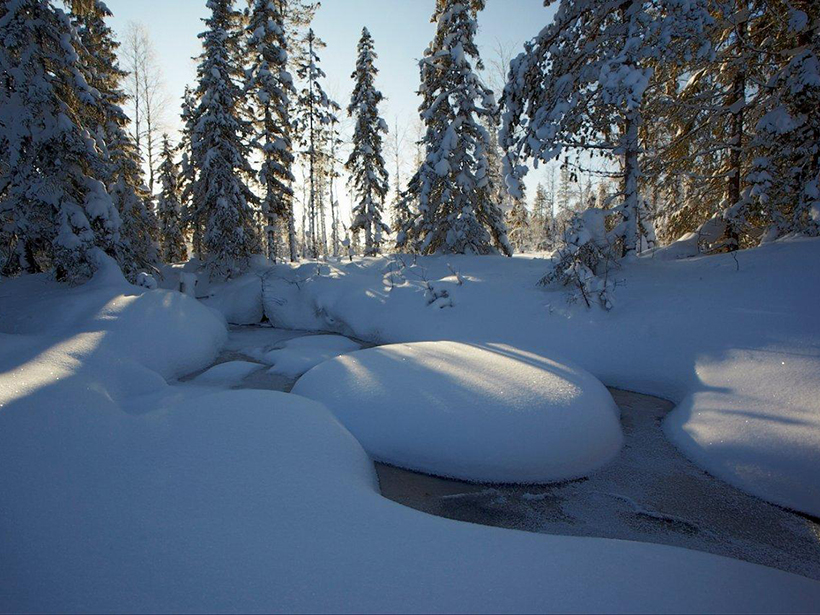Researchers built a glass-encased test environment that helps them assess streamflow without the confounding factors introduced by bed forms.
rivers
Stream Network Geometry Correlates with Climate
A "big data" analysis of nearly 1 million river junctions in the contiguous United States shows that branching angles in dendritic drainages vary systematically between humid and arid regions.
Arctic Permafrost Thaw Would Amplify Climate Change
An international team probed Arctic permafrost samples to better understand the carbon feedback loop that could be set off by future thawing.
What Proportion of River Nutrients Reaches the Open Sea?
Results of the first geographically based estimates of river nutrient supply indicate that 75% of dissolved nitrogen and 80% of phosphorus reach the open ocean.
River's Rise Linked to Oklahoma's Largest Earthquake
As human-induced earthquakes increase in frequency and magnitude, researchers race to uncover their effects on surface water and groundwater.
Boulders Limit Transport of Sand and Gravel in Steep Rivers
Mountain rivers and streams actively reshape landscapes by eroding material from uplands and depositing it in lowlands. Scientists can now predict this transport in very steep streams.
Groundwater: A Hidden Influence on River Shape
A new study shows how groundwater influences river dynamics and channel pattern.
A Flip-Flopping Climate Could Explain Mars's Watery Past
A new hypothesis might reconcile two opposing theories that have tried to explain Mars's mysterious history for more than 40 years.
New Flood Model Offers National Streamflow Coverage
The model, released by the National Weather Service, will provide neighborhood-level flood forecasting.
Headwater Streams May Export More Carbon Than Previously Thought
New research sheds light on the streams that carry carbon away from peatlands with the hope that the data will better inform climate models.

